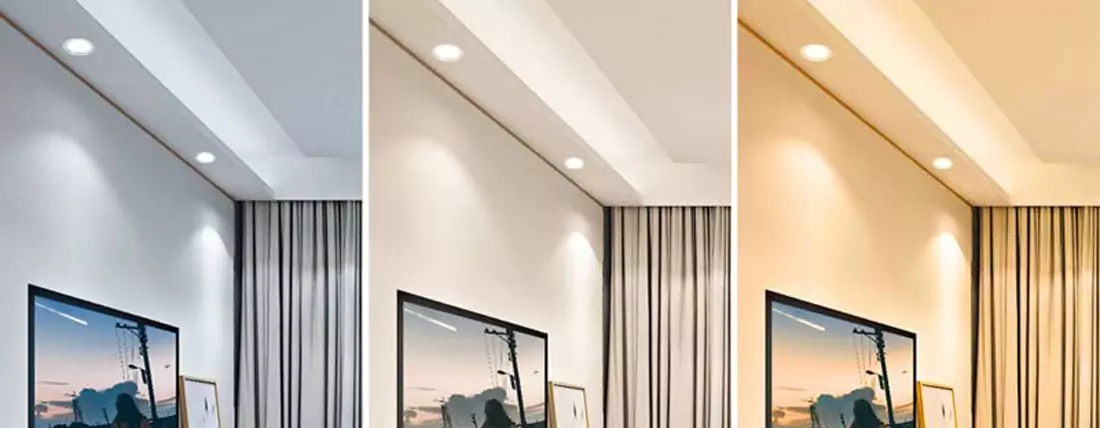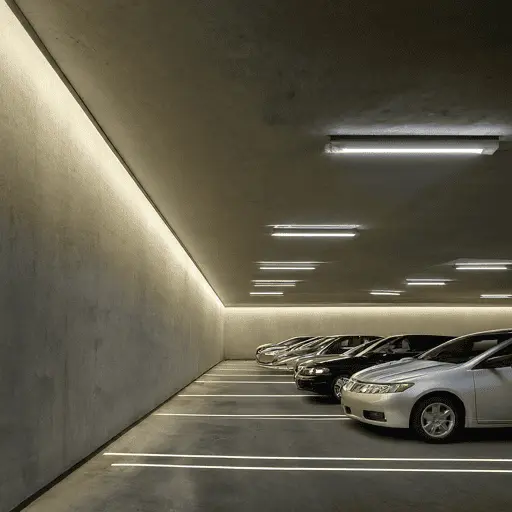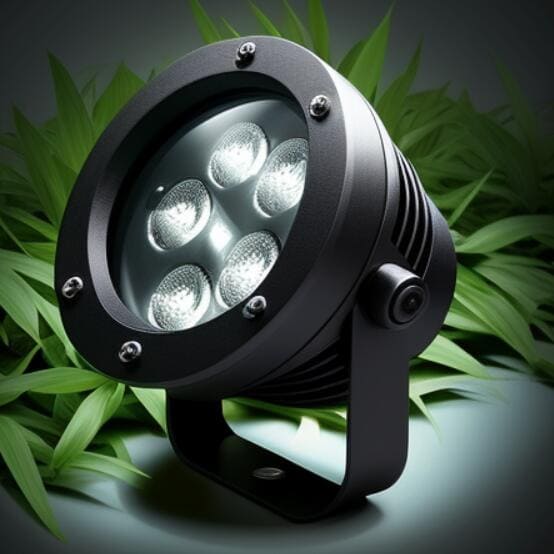1. Introduction
As the world moves towards more energy-efficient options, many people are choosing to upgrade their traditional lighting to LED lighting. LED lighting retrofit kits are a simple and effective solution for making this upgrade. Using LED Retrofit Kits is a smart way to lower your energy costs and be more environmentally friendly. In this guide, we’ll cover everything you need to know about LED retrofit kits, including what they are, how they work, their advantages, factors to consider before upgrading, how to install them step-by-step, how to choose the right kit, common applications, maintenance and care, and how LED retrofit kits compare to other lighting solutions.
II. Understanding LED Lighting Retrofit Kits
1) What are LED Lighting Retrofit Kits?
LED lighting retrofit kits are packages that help you upgrade your existing lighting systems to LED technology. These kits make it easy to switch to LED lighting without replacing your current fixtures entirely. LED retrofit kits have all the necessary components to transition from traditional lighting to sustainable and efficient LED technology. The kits include LED light sources, drivers, heat sinks, and mounting hardware. They’re designed to work with many types of fixtures in residential, commercial, or industrial settings. The installation process is user-friendly, and the comprehensive instructions guide users step by step. LED lighting retrofit kits are a practical and accessible way to implement energy-efficient technologies. They help you save on energy costs while being environmentally conscious.
2) How Do They Work?
LED retrofit kits are a combination of advanced technology and user-friendly design. These kits are made to fit a wide range of fixture types, from traditional incandescent fixtures to fluorescent tubes. They are easy to install and provide better illumination while using less energy.
LED retrofit kits are designed to easily integrate into your current lighting system, whether it’s in a residential, commercial or industrial setting. Once installed, you’ll notice a difference in the brightness and efficiency of the lighting. LED lighting is also more sustainable and can help reduce your energy bills.
LED retrofit kits are designed to optimize illumination. They provide a customizable lighting experience that caters to your preferences, whether you want warm, cozy tones or the crispness of daylight. These kits come with easy-to-follow instructions, so anyone can install them confidently.
III. Advantages of LED Lighting Retrofit Kits
- Energy EfficiencyOne of the main advantages of LED lighting retrofit kits is their energy efficiency. LEDs use significantly less energy than traditional lighting systems. They produce less heat than other types of bulbs, such as metal halides, CFLs, and incandescent bulbs. Therefore, you won’t need to spend extra money cooling your rooms during the summer months, which can result in significant cost savings over time. LED lights come in different colors, including daylight and warm white, so you can easily replace your old bulbs without changing the look of your room. They also display colors more accurately, making them perfect for lighting up artwork or for doing makeup.
- Cost SavingsIn addition to energy savings, LED lighting retrofit kits can also result in cost savings. By upgrading to energy-efficient LEDs, businesses and homeowners can reduce their energy bills and maintenance costs.
- Longevity and DurabilityLED lighting retrofit kits are designed to last longer than traditional lighting systems. LEDs have a longer lifespan and are more durable than traditional lighting systems, which can reduce the need for frequent replacements. LED bulbs are also durable and eco-friendly, making them a great choice for anyone who wants to save money and help the environment.
IV. Factors to Consider Before Retrofitting

1) Compatibility
It’s important to ensure that the retrofit kit is compatible with the existing lighting system. Some retrofit kits may not work with certain fixtures, so it’s important to do research and consult with a professional before retrofitting.
2) Lighting Requirements
Different spaces and applications have different lighting requirements. It’s important to consider the lighting requirements for the space before retrofitting to ensure that the new lighting system meets the necessary lighting requirements.
- Equivalent Wattage – To make things easier, you can compare an LED bulb to an incandescent one to estimate how well it will light a room. As a rough guide, use 1/4 or 1/5 of the incandescent wattage value for LED bulbs.
- Lumens – Lumens directly measure just how much light the bulb gives out in total. On average, a 60-watt incandescent shines at 800 lumens, with roughly 50-100 lumens of difference above or below. The variance depends on manufacturer and age of the lamp. LEDs are directly rated for their max lumen rating and last much longer without dimming of the bulb.
- Color Temperature – This is a guide to how the light will look. Lower values are warmer, with 2700-3000K being a more incandescent “warm white” while higher temperatures like 5000K will deliver a very harsh “stark white” light.
- Driver Content – LEDs usually do not work with AC voltage. Instead, they need a driver to convert the voltage from AC to DC for them to work properly. Most socket-based LED lamps come with a built-in driver, but you should check before buying to ensure that you get both an LED and a driver if the lamp doesn’t come with one already.
3) Budget
Switching to LED lighting may be expensive at first, but it can save money in the long run. You should think about how much money you have for the switch and how much money you might save over time.
Energy Saving for LED Lights vs Incandescent vs CFL
| Incandescent | CFL | LED | |
| Life Span (In Hours) | 1500 | 10000 | 50000 |
| Cost | 0.54 | 2.13 | 5.3 |
| Power | 60W | 14W | 6W |
| e.g.price of electricity/Hour (USD) | 0.027 | 0.0053 | 0.0027 |
| Electricity Cost Used Over 50K Hours(USD) | 133 | 26 | 12 |
| Bulbs Needed For 50K Hours Of Usage | 40 | 5 | 1 |
| TOTAL 50000 Hour Lighting COST (USD) | 154 | 37 | 15 |
V. Step-by-Step Installation Guide
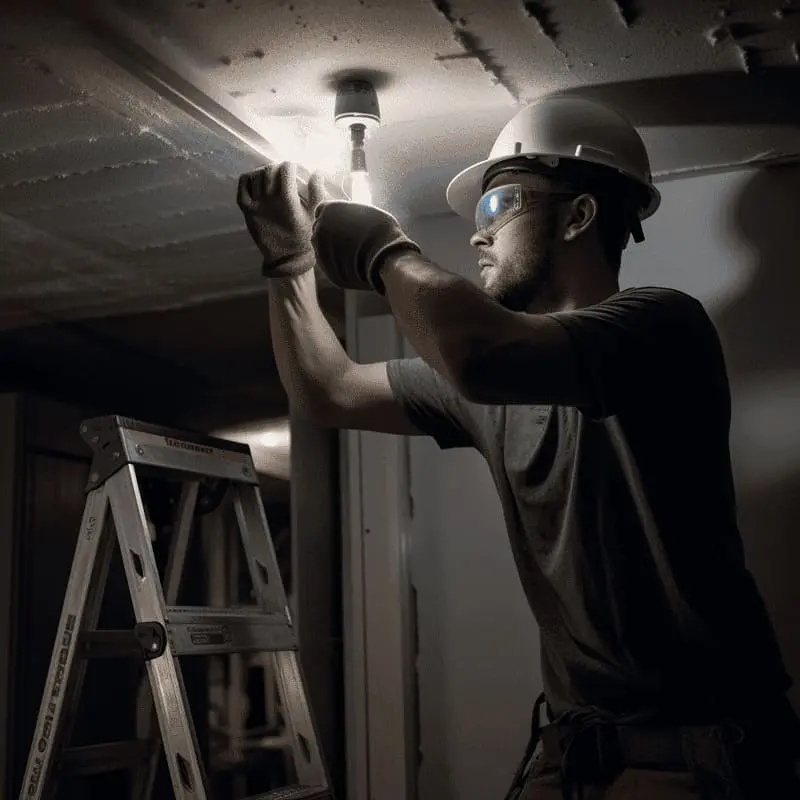
1) Safety Precautions
Before beginning the installation process, it’s important to take safety precautions. Turn off the power to the existing lighting system and wear protective gear, such as gloves and safety glasses.
2) Assessing Existing Fixtures
Assess the existing fixtures to determine if they are compatible with the retrofit kit. Remove any existing bulbs and components before installing the retrofit kit.
3) Installing the Retrofit Kit
Follow the manufacturer’s instructions for installing the retrofit kit. The installation process may vary depending on the type of retrofit kit and the existing fixture.
VI. Choosing the Right LED Lighting Retrofit Kit
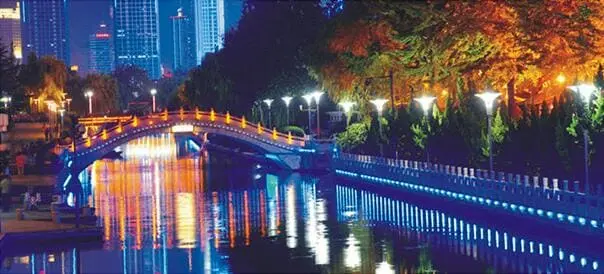
1) Lumen Output and Lux Level
When choosing lighting, it’s important to understand the relationship between lumen output and lux level. Lumen output measures the brightness of a light source, while lux level measures how intense the light is on a specific surface. These two metrics help you choose the right LED retrofit kit for your space.
Lumen output tells you how bright the light is. A higher lumen output means a brighter light, which is important in areas where you need a lot of light. But lumen output alone doesn’t tell you how well the light illuminates the area.
That’s where lux level comes in. Lux is a measurement of how much light is on a surface. Lux level considers things like how far away the light is and the shape of the room. By looking at these factors, lux level tells you how well the space will be lit.
When choosing an LED retrofit kit, it’s not just about getting the highest lumen output. You need to find the right balance between lumen output and lux level for your space. For example, a high lumen output won’t help if the lux level is too low because the light isn’t distributed well. A moderate lumen output could be perfect if the lux level is right.
To make the best choice, think about what you need the space for. Do you need a lot of light for working, or do you want a softer, more relaxing light? Each situation needs a different balance of lumen output and lux level.
A high lumen output doesn’t mean better lighting if the lux level isn’t right. By finding the right balance between these two metrics, you can choose a retrofit kit that provides the right amount of light for your needs and creates a comfortable and well-lit space.
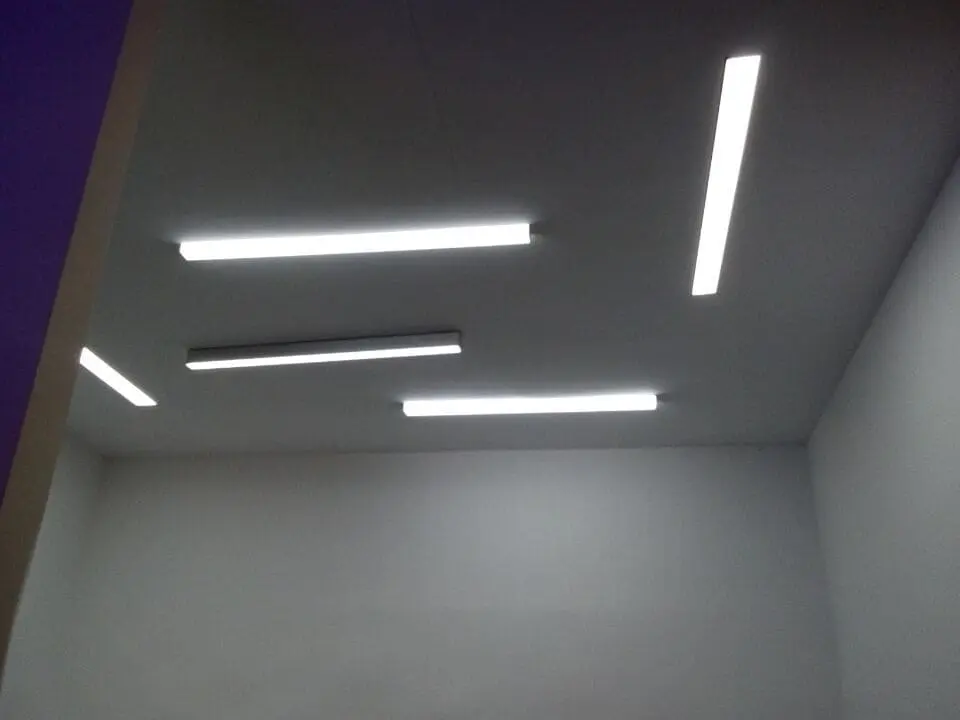
Recommended Light Levels for Indoor Spaces
The amount of light outdoors on a clear day is about 10,000 lux. Inside a building, the light level near windows is usually around 1,000 lux, but it can drop to as low as 25-50 lux in the middle of a room. When light levels are too low, you may need extra lighting.
It used to be common to have light levels between 100-300 lux for normal activities, but today it’s more common to have light levels between 500-1000 lux depending on the activity. For precision and detailed work, you may need even more light, up to 1500-2000 lux. The chart below shows recommended light levels for different workspaces:
| Activity | Illumination(lux, lumen/m2) |
| Public areas with dark surroundings | 20 -50 |
| Simple orientation for short visits | 50 -100 |
| Working areas where visual tasks are only occasionally performed | 100 -150 |
| Warehouses, Homes, Theaters, Archives | 150 |
| Easy Office Work, Classes | 250 |
| Normal Office Work, PC Work, Study Library,Groceries, Show Rooms, Laboratories | 500 |
| Supermarkets, Mechanical Workshops, Office Landscapes | 750 |
| Normal Drawing Work, Detailed Mechanical Workshops, Operation Theatres | 1,000 |
| Detailed Drawing Work, Very Detailed Mechanical Works | 1500 -2000 |
| visual tasks of low contrast and very small size for prolonged periods of time | 2000 -5000 |
| Performance of very prolonged and exacting visual tasks | 5000 -10000 |
| Performance of very special visual tasks of extremely low contrast and small size | 10000 -20000 |
2) Color Temperature
Color temperature is a crucial factor in LED lighting. It influences how a space looks and feels. LED lights come in different color temperatures, each providing a unique hue that affects the overall atmosphere of a room.
Color temperature is measured in Kelvins (K). Lower color temperatures (2700K to 3500K) create warm and cozy tones, similar to candlelight or sunrise. They’re great for spaces that need to be comfortable and inviting, such as living rooms, bedrooms, or dining areas. On the other hand, higher color temperatures (6000K to 6500K) emit cooler shades that mimic daylight or a bright overcast sky. They promote alertness, making them ideal for places where productivity matters, like offices, kitchens, and workshops.
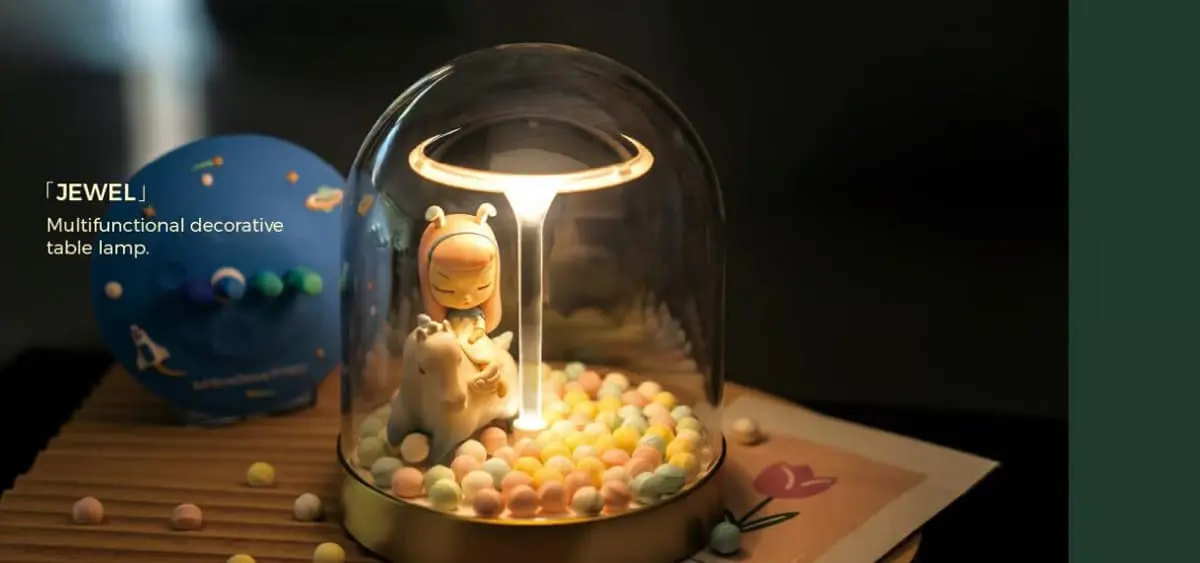
When choosing a color temperature for a room, consider the purpose and how you want people to feel in that space. The choice between warm and cool tones is not just about looks but also about function and emotion.
By selecting the right color temperature, you can transform a study corner into a focused work area or create a cozy living room that invites relaxation. Combining color temperature with the right lumen output and lux level helps create a holistic lighting design that supports the desired emotional and functional attributes.
Ultimately, color temperature is not just a technical aspect of lighting but a crucial element that affects human experience. It’s a powerful tool that allows you to create the ambiance you envision and make your space a haven of both illumination and emotion.
3) Dimming Capabilities
LED lighting is all about customization and adaptability, and dimming is a crucial aspect of achieving this. If you want control over the brightness and ambiance of your space, choose retrofit kits with dimming capabilities. This lets you adjust the intensity of the light to suit your needs and mood. You can create a cozy atmosphere for a movie night or opt for bright lighting for a lively gathering. Dimming also saves energy and extends the lifespan of LED lights, reducing both maintenance costs and environmental impact. Not all retrofit kits have this feature, so choose wisely. Look for kits that highlight dimming capabilities to enhance your overall lighting experience.
VII. Common Applications
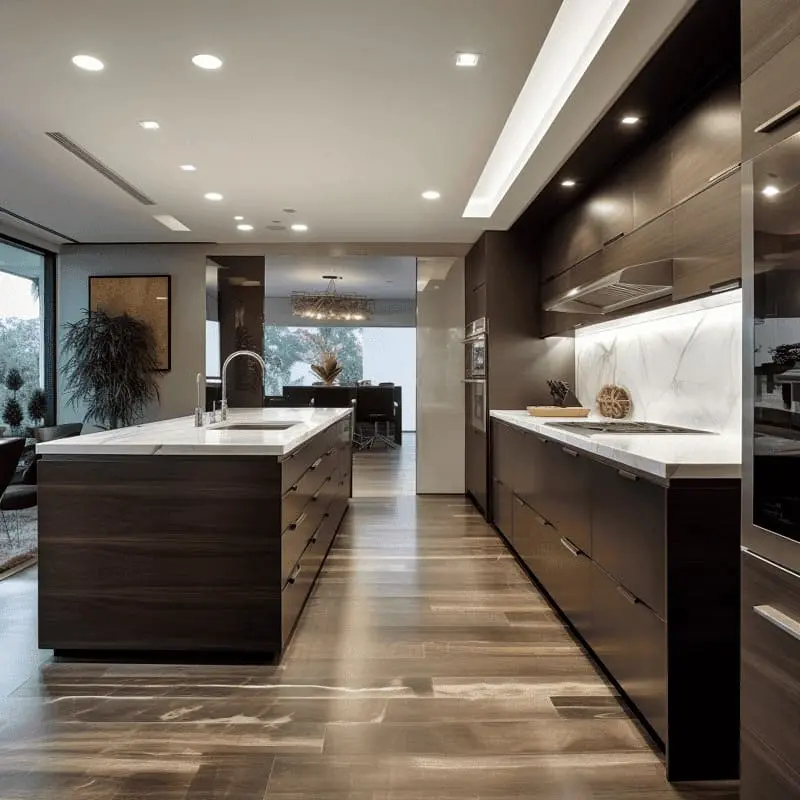
1) Residential Spaces
LED retrofit kits can be used to upgrade lighting systems in homes, including ceiling panel light fixtures, recessed lighting, and more. With energy efficiency being a top priority for homeowners, LED retrofit kits offer a long-term solution that can significantly reduce energy bills while providing better lighting quality.
In addition to cost savings, LED retrofit kits also offer a wide range of design options for residential spaces. For instance, they come in various color temperatures and brightness levels, allowing homeowners to customize the lighting to fit their specific needs.
2) Commercial Buildings
LED retrofit kits are a great solution for commercial buildings, such as offices, retail spaces, and more. By using LED retrofit kits, businesses can reduce their operational costs and increase their energy efficiency. In addition, LED retrofits provide a well-lit environment that not only looks great, but also creates a welcoming atmosphere for customers and employees. By upgrading your lighting to LED, you can also reduce your carbon footprint and contribute to a healthier environment. Moreover, LED retrofits help to reduce maintenance costs,this means that less time, effort, and money will be spent on replacing burnt-out bulbs. Overall, LED retrofit kits are a smart investment for businesses looking to save money, reduce their environmental impact, and create a better environment for their customers and employees.
3) Industrial Facilities
LED retrofit kits are suitable for use in industrial facilities such as warehouses and manufacturing plants. These spaces require strong and durable lighting, which is exactly what LED retrofit kits provide. With their robust construction and powerful illumination, they are perfect for use in warehouses, factories, and production areas.
VIII. Maintenance and Care
To ensure the longevity and effectiveness of the LED retrofit kit, it’s important to perform regular maintenance and care, including:
Cleaning
Regularly cleaning the retrofit kit can help maintain its effectiveness and reduce the need for replacements. LEDs require minimal maintenance, but it is important to regularly clean the fixtures and components to ensure optimal performance and longevity.
Replacement
If any components of the retrofit kit fail or malfunction, they should be promptly replaced to ensure the effectiveness of the lighting system. LEDs rarely fail abruptly. If a light source does go out, you can replace it individually without disturbing the rest of the system.
IX. Comparing LED Lighting Retrofit Kits to Other Lighting Solutions
Comparison Chart Between LED Lights VS. Incandescent Bulbs VS. CFLs
| Energy Efficiency & Energy Costs |
LEDs | Incandescent Light Bulbs |
Compact Fluorescents ( CFLs ) |
| Life Span ( average ) | 50.000 hours | 1.200 hours | 8.000 hours |
| Watts of electricity used (equivalent to 60 watt bulb) |
6 – 8 watts | 60 watts | 13-15 watts |
| Kilo-watts of Electricity used | 239 KWh/yr. | 3285 KWh/yr. | 767 KWh/yr. |
| Light Output | |||
| Lumens | Watts | Watts | Watts |
| 450 | 4-5 | 40 | 9-13 |
| 800 | 6-8 | 60 | 13-15 |
| 1100 | 9-13 | 75 | 18-25 |
| 1600 | 16-20 | 100 | 23-30 |
| 2600 | 24-28 | 150 | 30-55 |
FAQs about LED Lighting Retrofit
Q: Are LED retrofit kits compatible with all light fixtures?
A: The compatibility of LED retrofit kits varies. To make sure it matches the specifications of your current fixtures, it’s crucial to check the retrofit kit before installing.
Q: Can I install LED retrofit kits by myself?
A: It’s possible to install LED retrofit kits by yourself, but it’s recommended to have professional installation to ensure safety and optimal performance.
Q: Do LED retrofit kits work with dimmer switches?
A: Yes, many LED retrofit kits are compatible with dimmer switches, which can provide you with customizable lighting options.
X. Conclusion
LED lighting retrofit kits offer a transformative way to improve energy efficiency and lighting quality in various settings. By upgrading existing fixtures, you can enjoy the benefits of LED technology while minimizing costs and environmental impact. Make the switch to LED retrofit kits and illuminate a brighter, more sustainable future.
Author
-

I'm Joseph, the Co-founder of CST Lighting, bringing over a decade of expertise in the LED lighting industry. With a strong focus on product marketing, I am dedicated to staying at the forefront of market trends, constantly enhancing my knowledge and skills to deliver top-notch products and services to our clients. Through our insightful blog posts, we strive to share our expertise, guiding readers through the ever-evolving landscape of LED lighting. Learn more via my linkedin profile https://www.linkedin.com/in/ledcst-joseph/
View all posts
